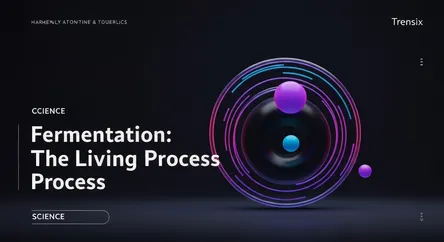Science
Fermentation: The Living Process

Discover the ancient metabolic process of fermentation, where microorganisms transform food, creating unique flavors and boosting gut health.
What is it?
Fermentation is a metabolic process where microorganisms like bacteria, yeast, or fungi convert carbohydrates—such as starches and sugars—into alcohol or acids. This process occurs in an anaerobic environment, meaning it doesn't require oxygen. It's a natural form of food preservation that also creates distinctive flavors, aromas, and textures. Well-known examples of fermented products include beer, wine, yogurt, cheese, sourdough bread, and kimchi. At its core, fermentation is life at a microscopic level, transforming simple ingredients into complex and digestible foods.
Why is it trending?
Fermentation is experiencing a major resurgence due to a growing public interest in gut health and the microbiome. Consumers are actively seeking probiotic-rich foods to support their digestive systems. This health-conscious trend, combined with a foodie culture that celebrates complex, artisanal flavors, has pushed fermented products like kombucha, kefir, and miso into the mainstream. The do-it-yourself (DIY) appeal of home fermentation, allowing people to create their own custom ferments, has also significantly fueled its popularity as a hobby.
How does it affect people?
The primary impact of fermentation on people is through their diet. Consuming fermented foods can introduce beneficial probiotics to the gut, which may improve digestion, boost the immune system, and support overall wellness. The fermentation process can also enhance the nutritional value of food by breaking down compounds and making vitamins and minerals more bioavailable for our bodies to absorb. Beyond health, it provides a vast array of flavors that define many cultural cuisines around the world, from German sauerkraut to Korean gochujang.